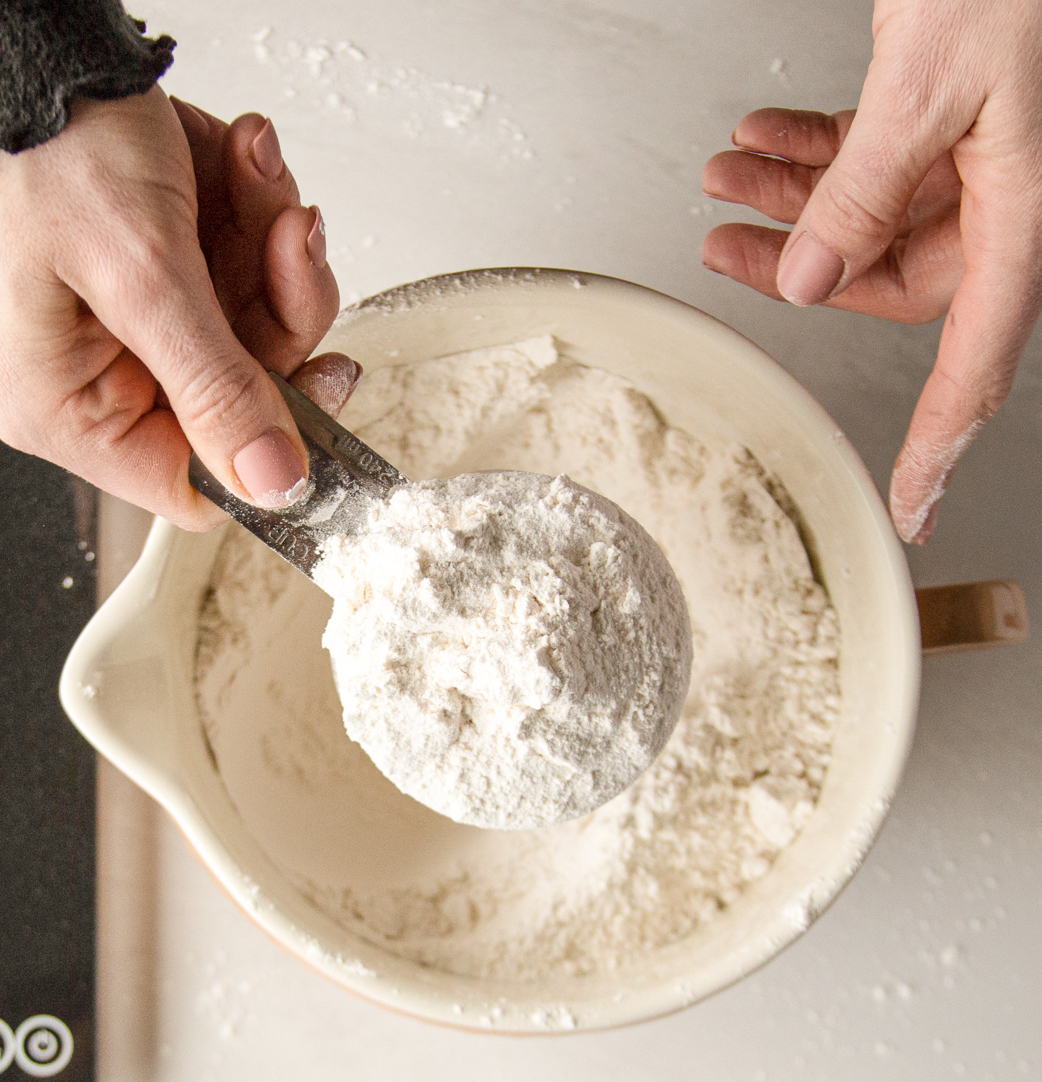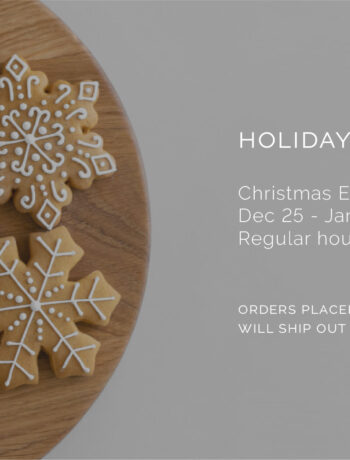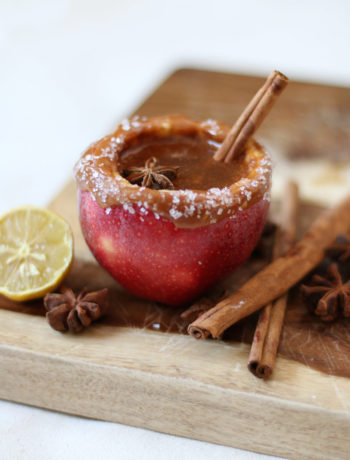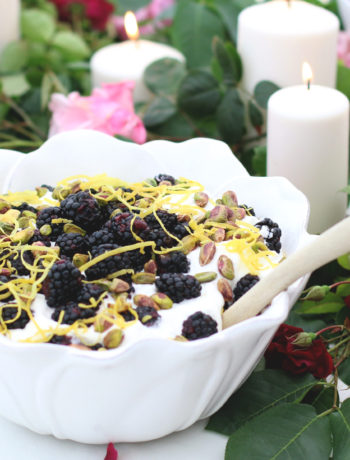Every baker has their own style for measuring flour. Spoon it in. Scoop it up. Shake it off. Level it down. Fluff it up. A different method for every baker!
Does the method actually matter?? Or can you just fill a measuring cup and call it good? Let’s do a little testing to find out.
Our testing consists of two stages. First, we tested different methods for measuring flour and then weighed the cup to determine the amount of flour. For the second stage, we made sugar cookies. One batch was made with a precise amount of flour, measured with a scale. Another batch was made with flour measured with a measuring cup. The difference in the dough and cookies is very telling.
Stage One: Methods of Measuring
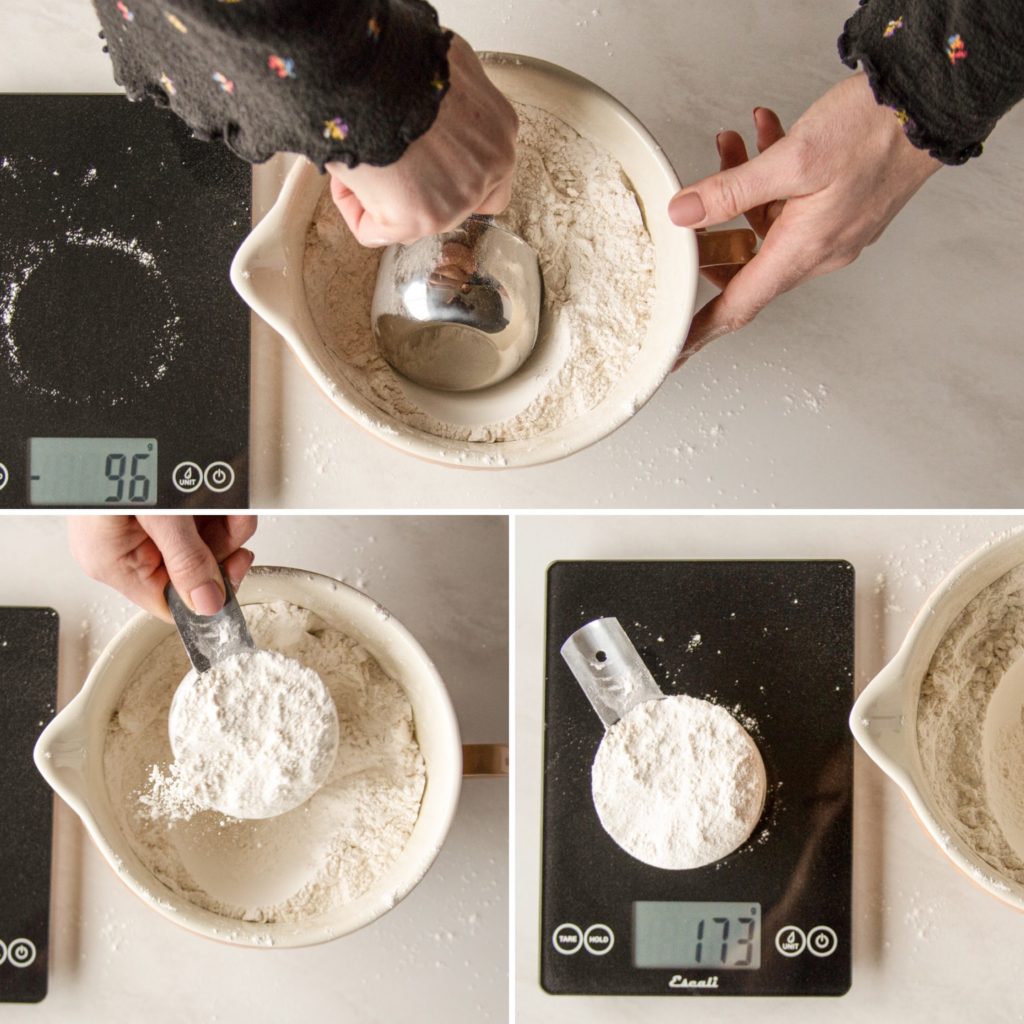
Method One is SCOOP & SHAKE. We scooped into a bowl of flour with the measuring cup. Then, we shook the cup to remove the excess flour on the top. The resulting cup was 173 grams of flour.
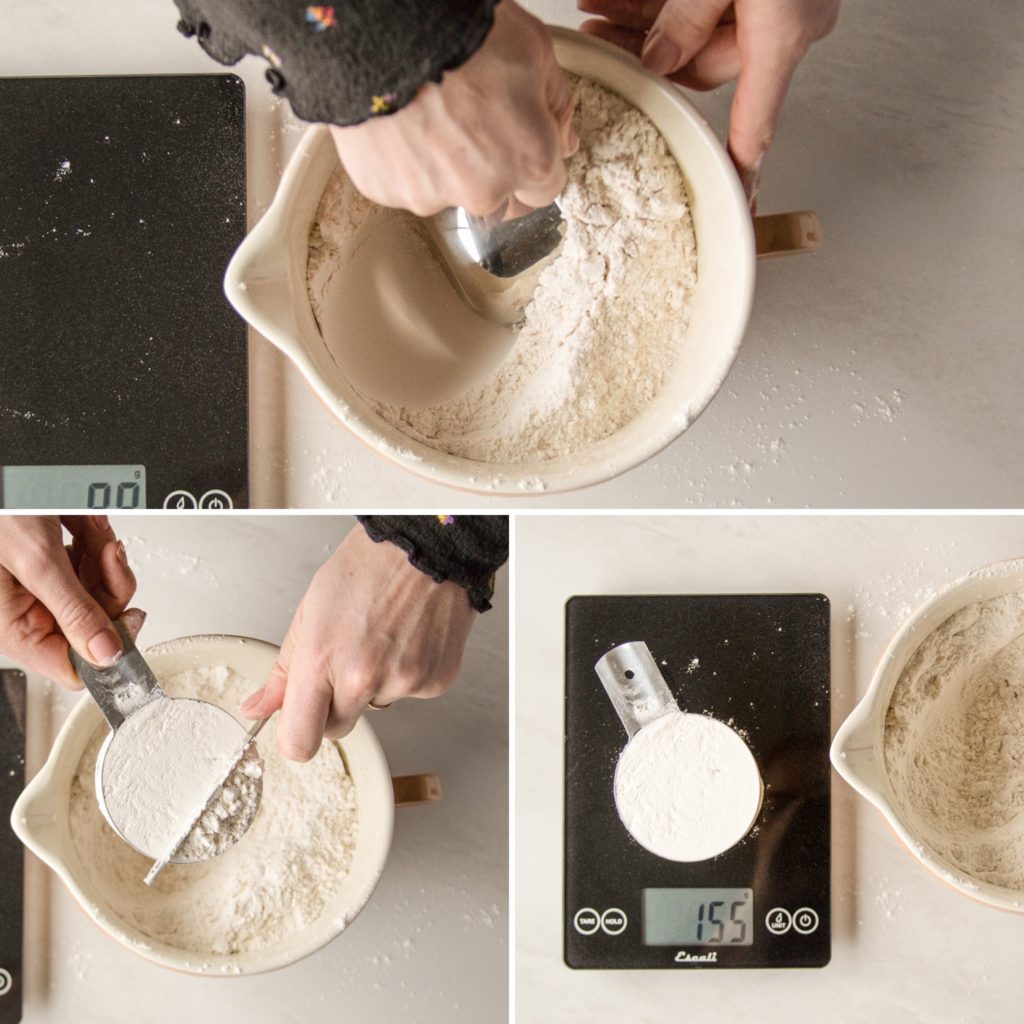
Method Two is SCOOP & LEVEL. We used the same measuring cup to scoop up one cup of flour. Then we used a knife to level off the extra flour. This method produced 155 grams of flour.
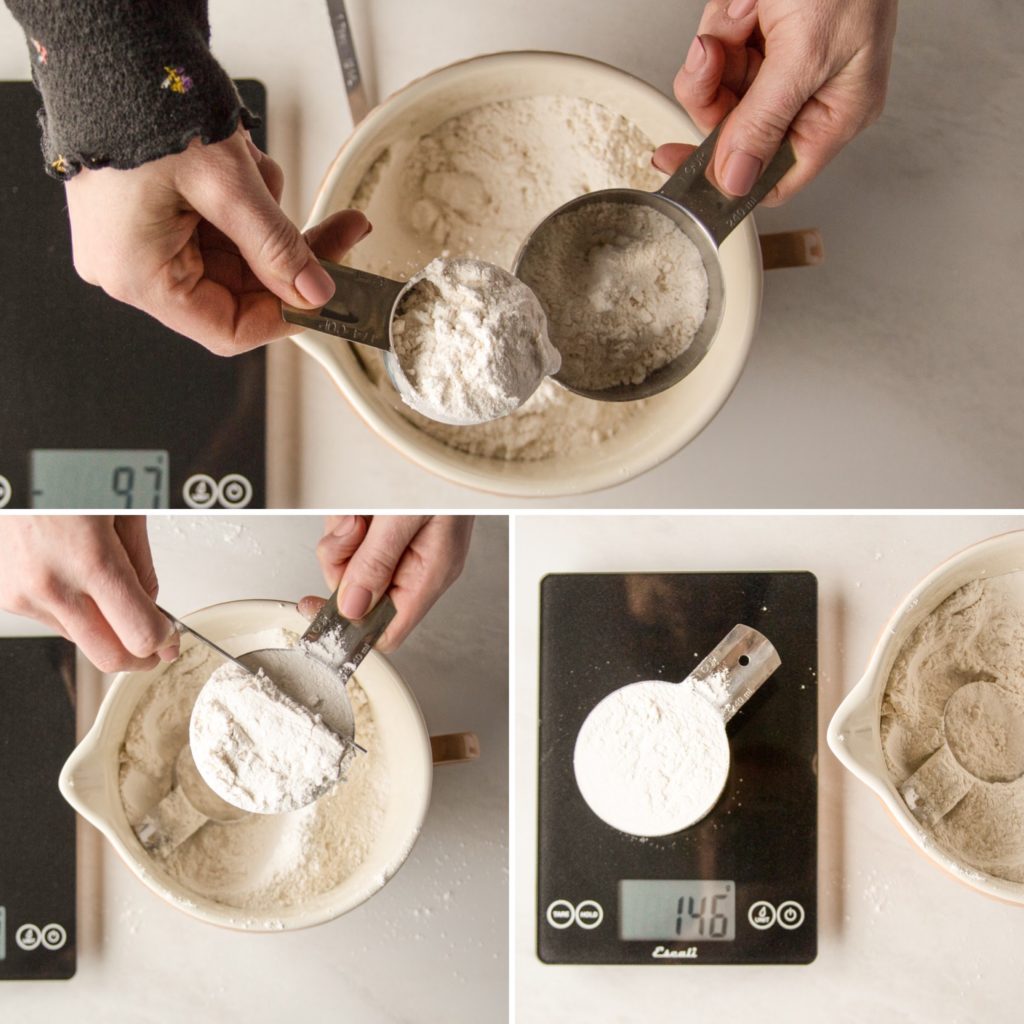
Method three is SPOON & LEVEL. We used a smaller measuring cup to fill the one cup measuring cup. Then we leveled the extra flour with a knife. This cup measuring 146 grams.
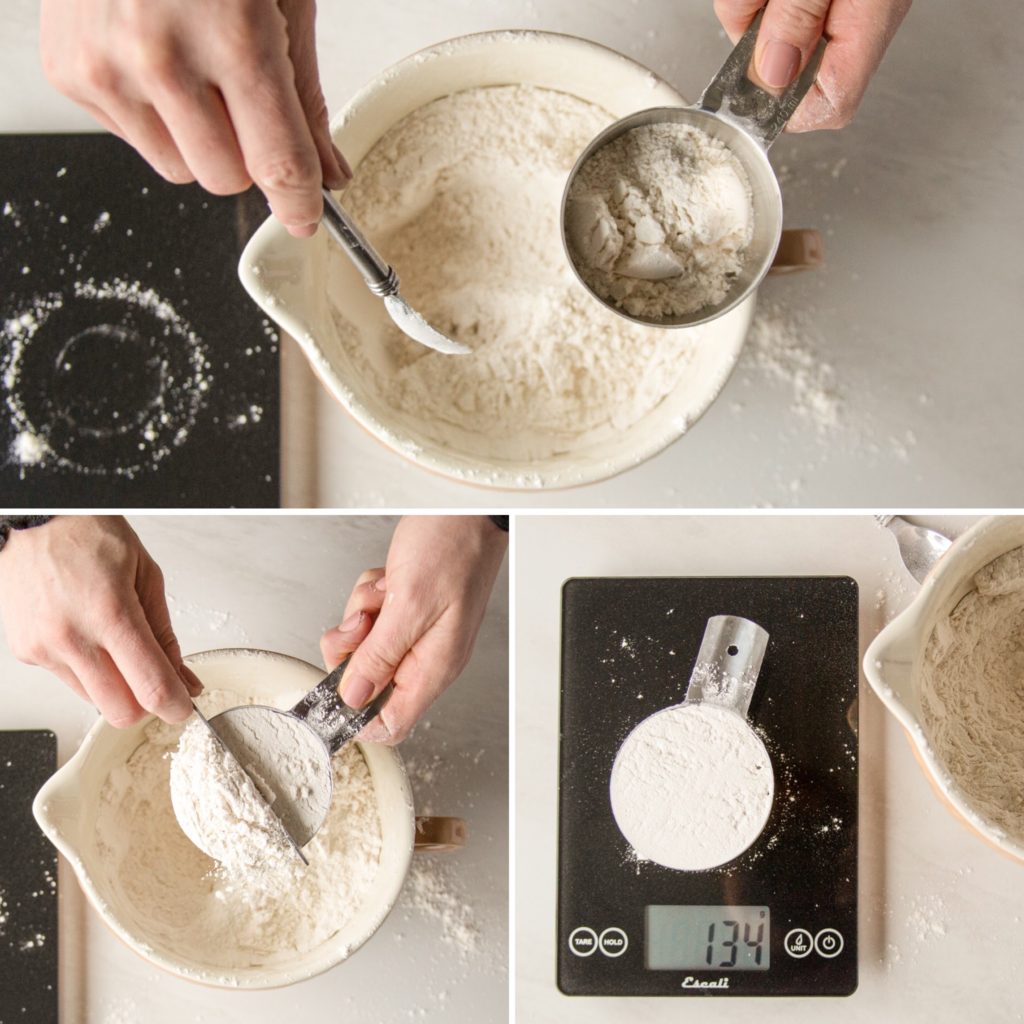
Method Four is FLUFF, SPOON, & LEVEL. For this method, we gently fluffed the flour before we spooned it into the measuring cup. We also used a smaller spoon, which took a bit longer, but resulted in a less packed cup of flour. Finally, we leveled the excess with a knife. This cup weighed 134 grams.
Which method is most accurate?
Accuracy is relative. Not all types of flours weigh the same. Whole wheat flour weighs more than cake flour. But for all-purpose flour, the rule of thumb is 120grams for one cup of flour. (Want the weight of other baking ingredients? Visit this guide! It is the most comprehensive!)
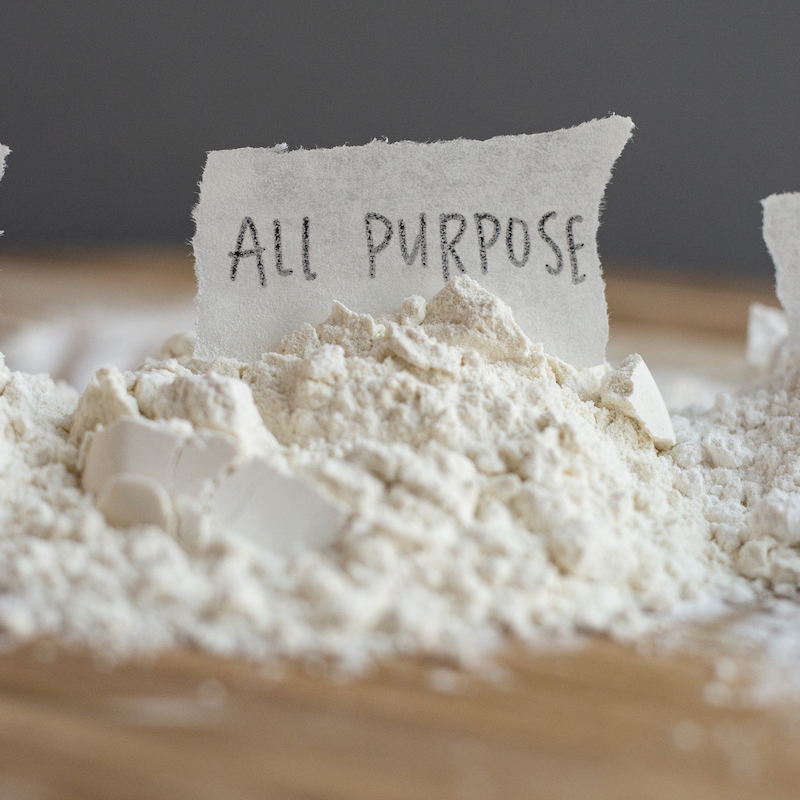
So, if we are following this rule – then method four (fluff, spoon, & level) is the closest, but still 14 grams over the weight of a cup of a flour. Therefore, using a scale is definitely the most accurate way to measure flour. Don’t have a scale? Then method four is your best option.
It is also important to take into consideration the way the recipe is written. If the author of the recipe gives a specific method for measuring the flour, then use that method. If no method is listed, use a scale to measure 120 grams or use method four (fluff, spoon, & level). But the best way to bake – weigh in grams! Many recipe developers are adding weight measurements to their recipes, which makes it much easier to replicate their creations in our own homes.
Does it actually make a difference?
For the next stage of testing, we wanted to determine if the variance in weight would actually make a difference when baked.
For this test, we made two batches of sugar cookies. The recipe from Blyss Cookies, gives a weight – 225 grams. So, for the first batch, we used that weight. For the second batch, we added just 12 extra grams of flour – 237 grams.
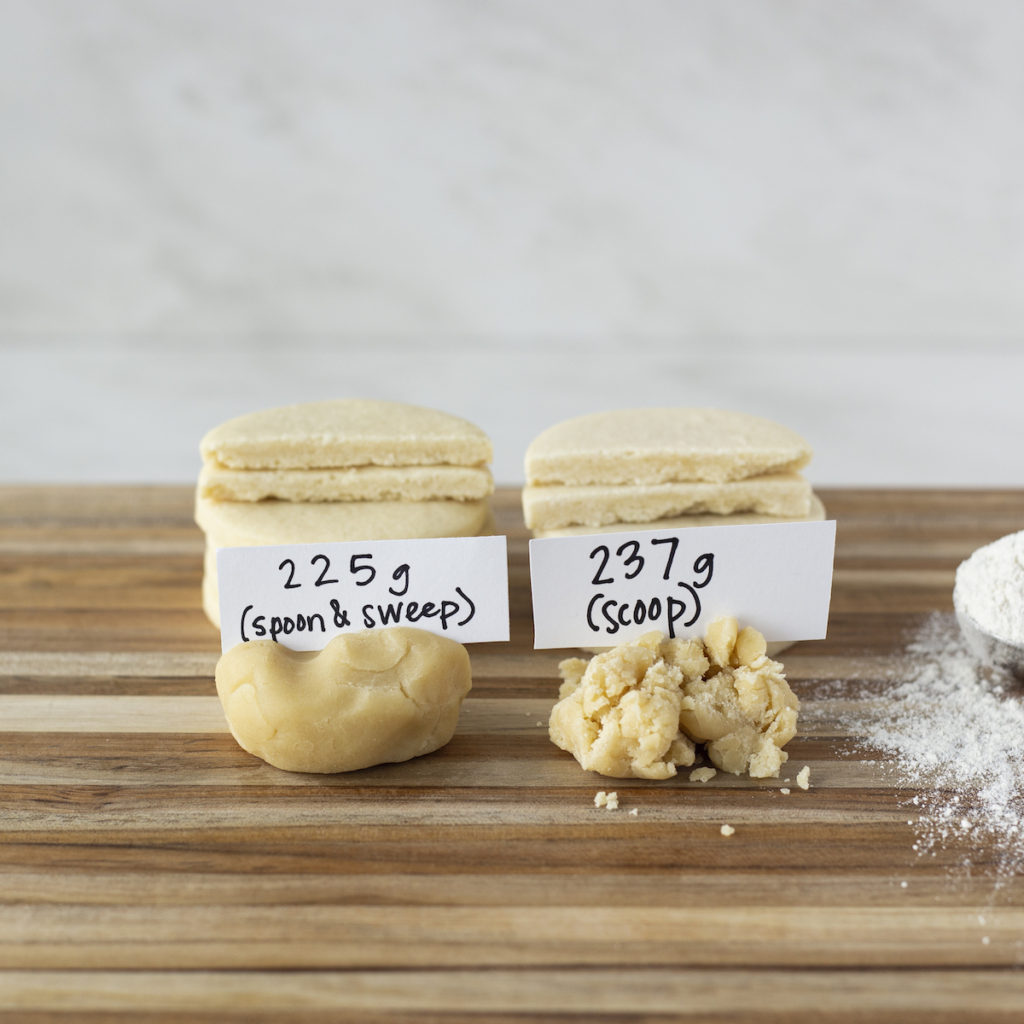
The difference was obvious as soon as we added the flour to the wet ingredients. The dough was dry and crumbly and would not form a ball. We rolled the dough between two sheets of parchment paper and it was cracking and falling apart. We were able to smush together enough dough to make a few cookies. But they were disappointing – their dense and dry texture was sad compared to the soft cookies made with the correct amount of dough. The only difference was 12 extra grams of flour!
Consider this:
| METHOD | WEIGHT | OVERAGE | Percent of bakers who use this method: |
| WEIGH | 120 grams | +0g | 32% |
| FLUFF, SPOON, & LEVEL | 134 grams | +14g | 18% |
| SPOON & LEVEL | 146 grams | +26g | 22% |
| SCOOP & LEVEL | 155 grams | +35g | 17% |
| SCOOP & SHAKE | 173 grams | +53g | 8% |
| FLUFF, SCOOP, & SHAKE | didn’t test | 6% |
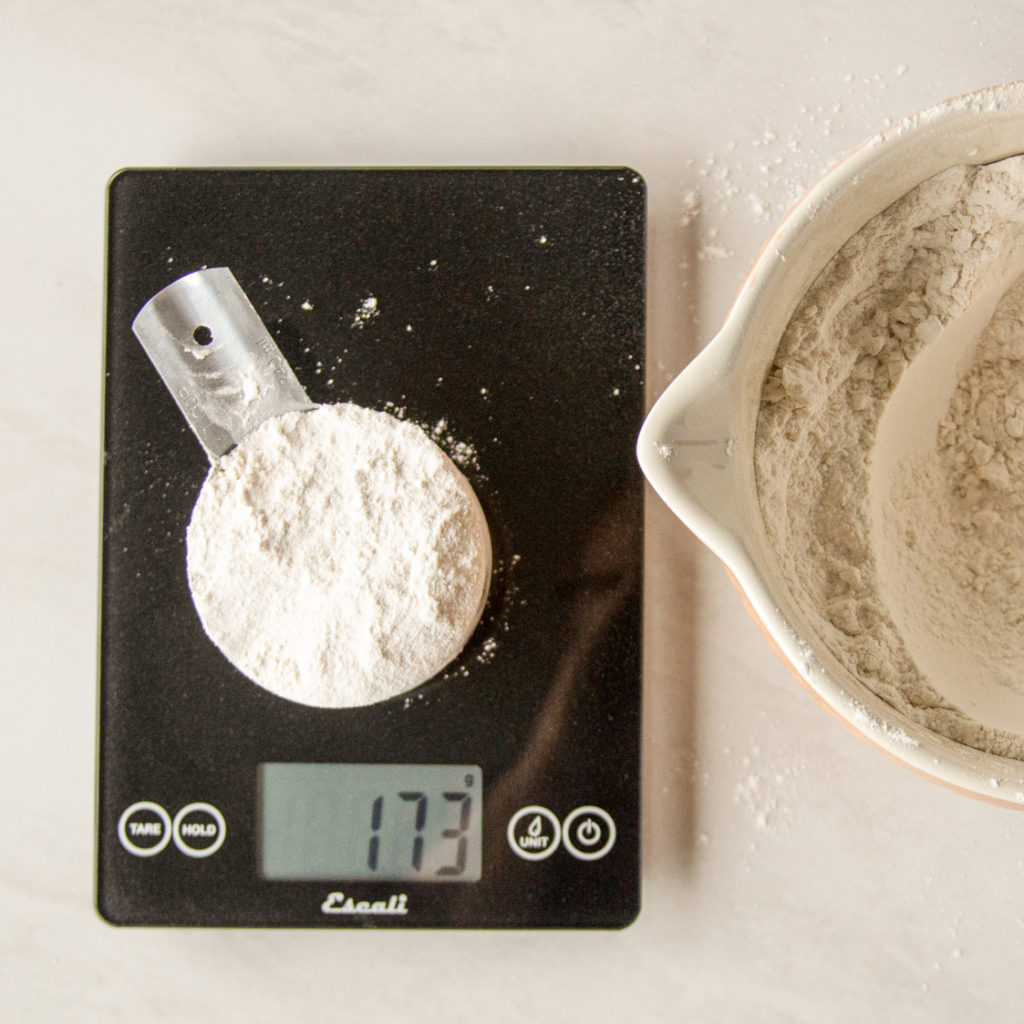
SCOOP & SHAKE 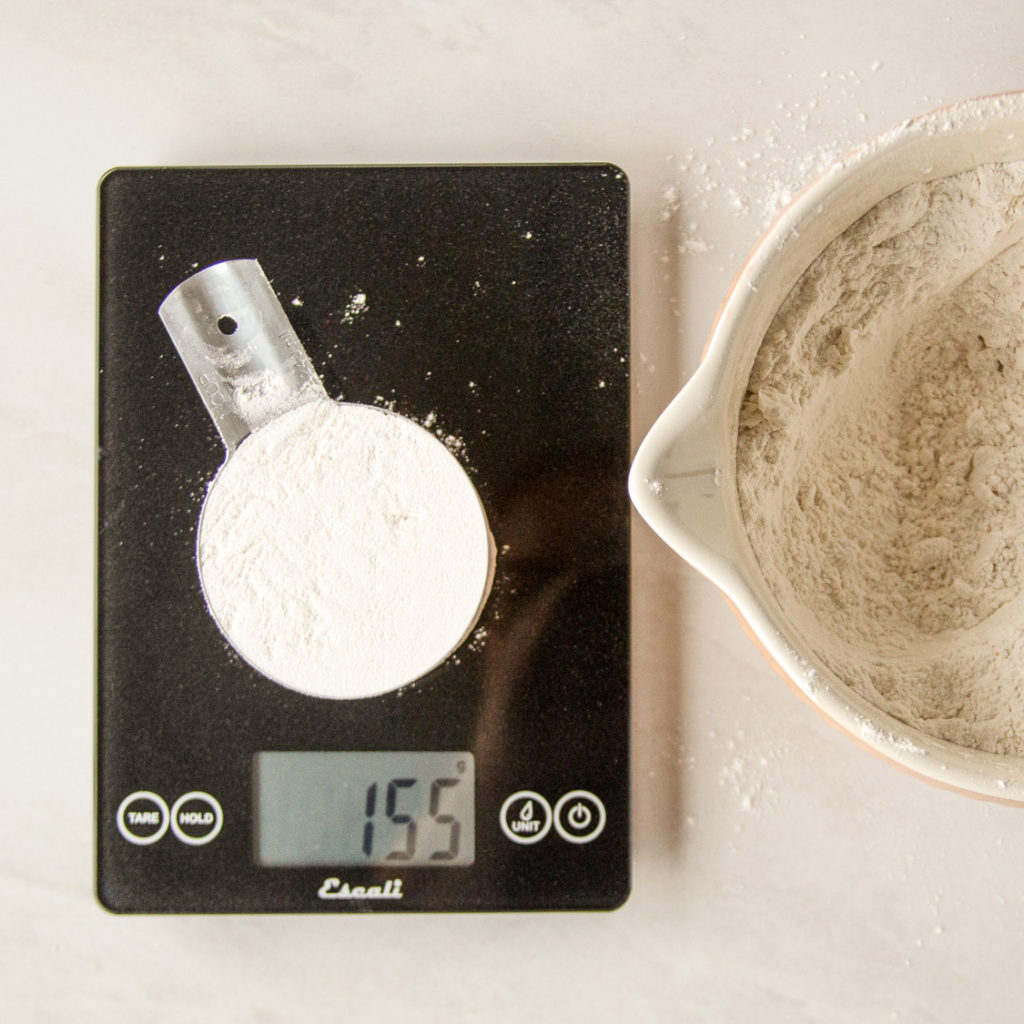
SCOOP & LEVEL 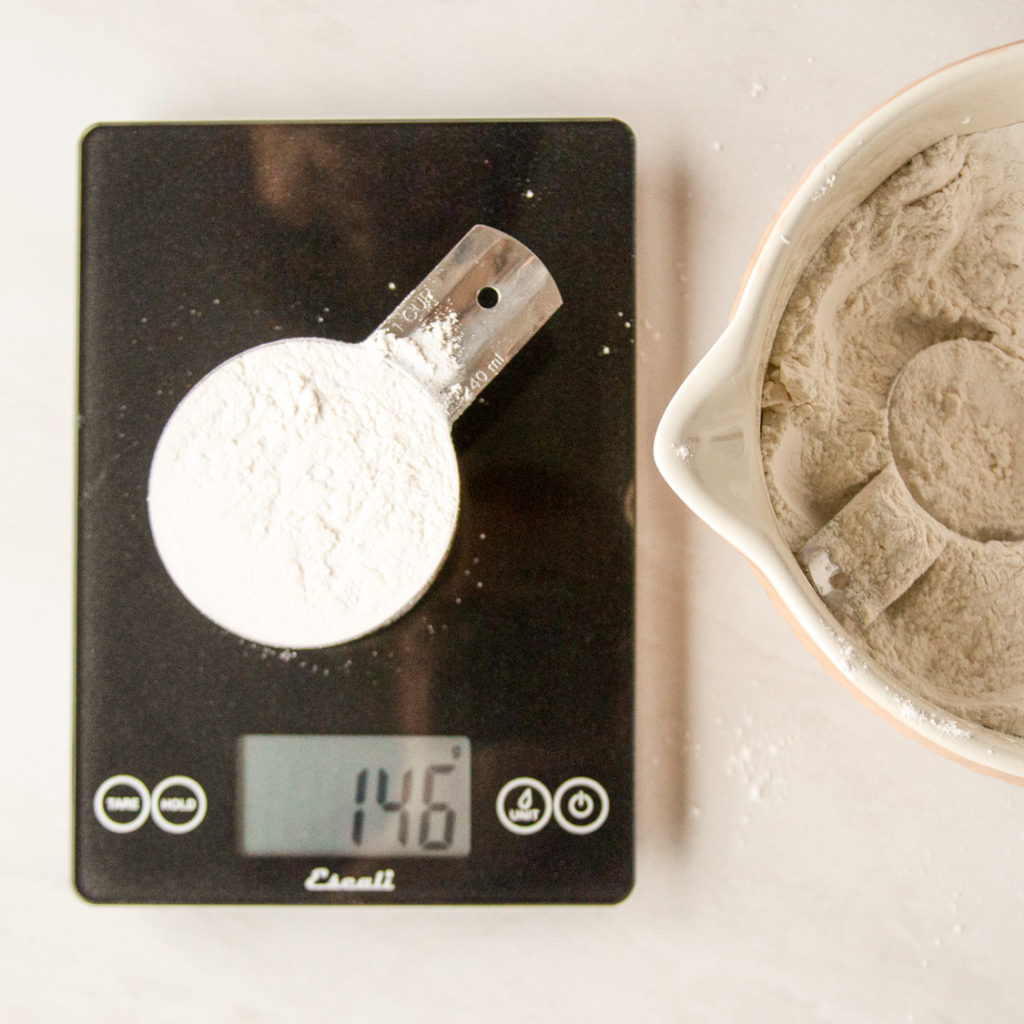
SPOON & LEVEL 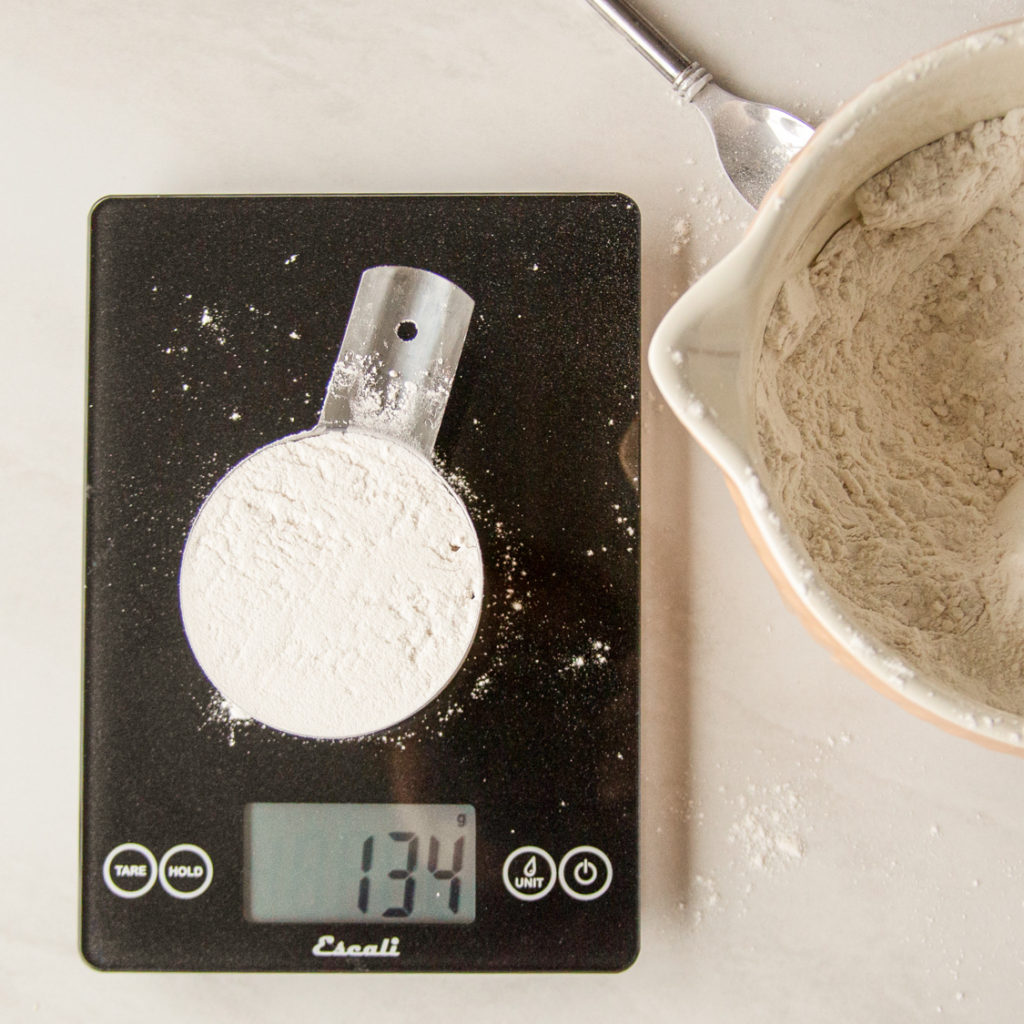
FLUFF, SPOON, & LEVEL
So, the closest measurement is still 14 grams excessive, which results in disappointing cookies. Are you ready to start weighing your flour yet? Haha. If you weren’t convinced before, you probably are now! It really does make a difference in your baking success!
Conclusion
A scale is a worthy investment. Using a scale to weigh flour (and other ingredients!) will take your baking from disappointing & unpredictable to reliable & consistent. We love these scales and we know you will, too!
Want more flour info? Learn about different types of flour here!

